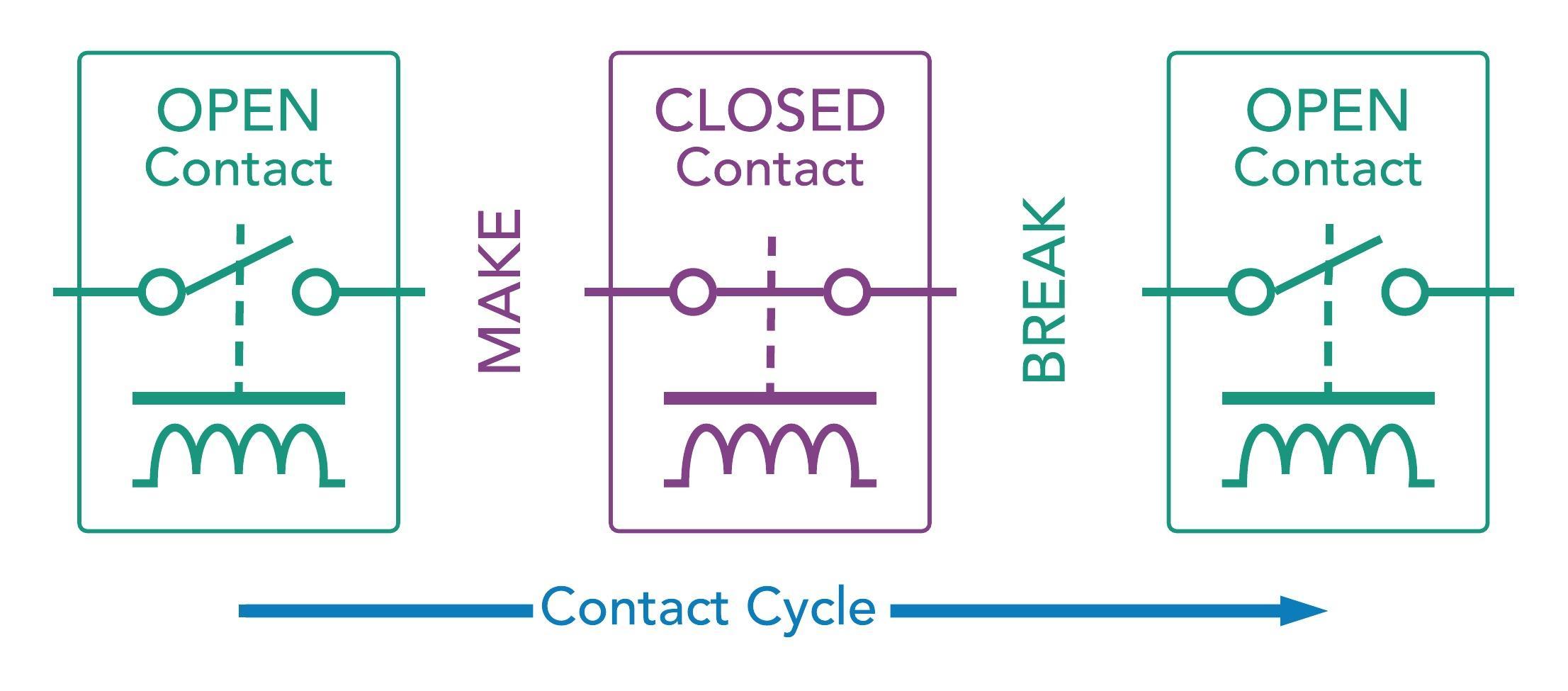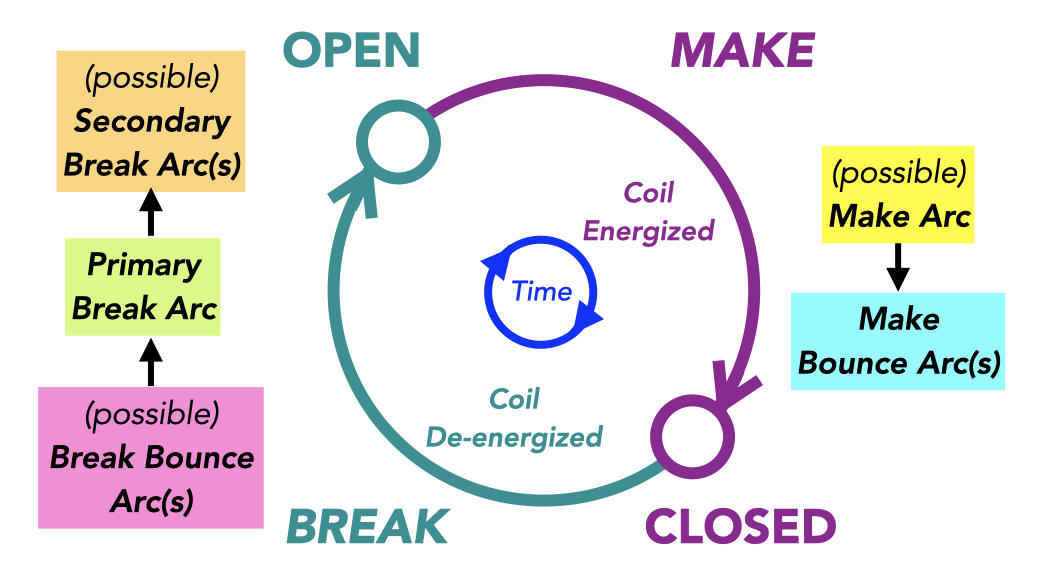Contact States and Contact Cycle Sequence
A contact cycles through four (4) distinct states: OPEN, MAKE, CLOSED and BREAK. The make and break states are generally transitional and are of generally short duration. The open and closed states are generally non-transitional and are of generally longer duration. A general switch cycle may start with the OPEN state. As part of the MAKE state, the contact may bounce multiple times until it achieves the CLOSED state. A general switch cycle may remain a certain amount of time in the CLOSED state. As part of the BREAK state, the contact may bounce multiple times until it re-enters the OPEN state.

Contact State Transitions:
OPEN, MAKE (contact closing), CLOSED, and BREAK (contact opening)

General Switch Cycle
A general switch cycle begins in the OPEN state, transitions through the MAKE state to the CLOSED state, then transitions through the BREAK state to the OPEN state
Each state generally has specific phases associated with them that the contact has to travel through. Note that the “Primary Break Arc” and “Secondary Break Arc(s)” are the direct cause of deleterious arc effects, including contact surface deterioration, metal sputtering, particle deposition, material migration, and surface destruction. A more detailed description of the contact cycle sequence is shown below.

Detailed contact cycle sequence; assumes that the contacts of a switch, relay, or contactor is working within specified operating limits.
2nd row: Contact States of OPEN, MAKE, CLOSED, and BREAK
3rd row: Contact Air Gap condition during cycles
4th row: Contact voltage or current condition
5th row: Arcing condition and type of arc
6th row: Micro weld condition
7th row: Contact metal condition
